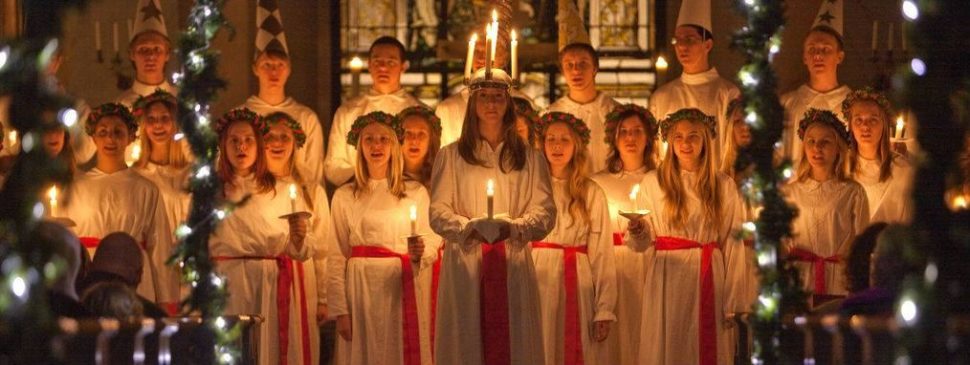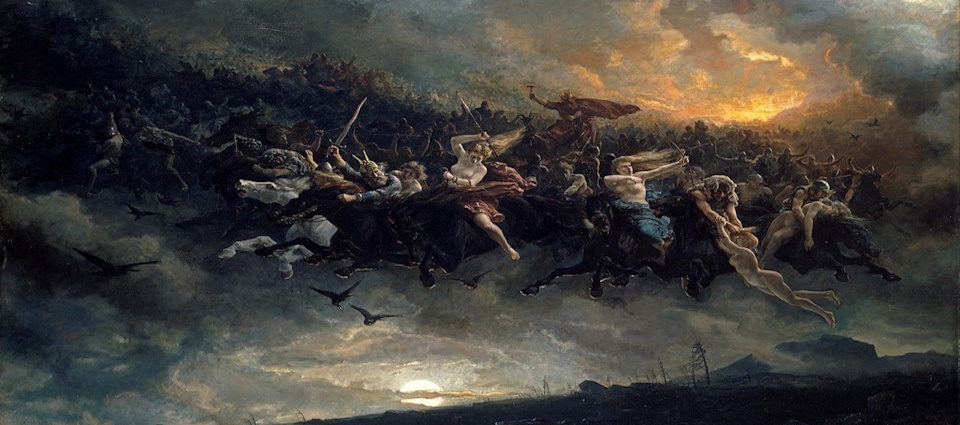13th December - St. Lucia's Day

2018 - updated 2022 & 2023. Thanks to Anne for this....
According to the legends, St Lucia would secretly bring food to the Christians hiding in Roman catacombs under the city. She would light her way with candles held in a wreath on her head so she could have both hands free to carry things. St. Lucia's Day
In traditional celebrations, Saint Lucy comes as a young woman with lights and sweets. It is one of the few saint days observed in Scandinavia. In some forms, a procession is headed by one girl wearing a crown of candles (or lights), while others in the procession hold only a single candle each.
Traditionally, Lucia wears ‘light in her hair’, which these days is a crown of electric candles. Each of her handmaidens carries a candle. She is accompanied by star boys dressed in white gowns, carrying stars on sticks and tall paper cones on their heads. The Christmas elves bring up the rear, carrying small lanterns.
Lucia represents the return of the sun, the longer days, the bearer of light. The current celebration format is quite recent, and recognised throughout Sweden.
The night treads heavily around yards and dwellings
In places unreached by sun, the shadows brood
Into our dark house she comes, bearing lighted candles,
Saint Lucia, Saint Lucia.
Lussinatta, the Lussi Night, was December 13. Then Lussi, a female being with evil traits, like a female demon or witch, was said to ride through the air with her followers, called Lussiferda. This itself might be an echo of the myth of the Wild Hunt, called Oskoreia in Scandinavia, found across Northern, Western and Central Europe. Yet, if Lussi and her band of hunters do happen to carry you off tonight, have no fear. You may be abducted to the Underworld but in Norse mythology this is Hel, not the Christian Hell. Hel is often described as a place of joy and feasting, drinking and fun. Sure, this is the dwelling place of the dead but not always seen as a state of torment and pain but rather a place where the dead 'live'.
La caza salvaje de Odín, by Peter Nicolai Arbo

Between Lussi Night and Yule, trolls and evil spirits, in some accounts also the spirits of the dead, were thought to be active outside. It was believed to be particularly dangerous to be out during Lussi Night.
According to tradition, children who had done mischief had to take special care, since Lussi could come down through the chimney and take them away, and certain tasks of work in the preparation for Yule had to be finished, or else the Lussi would come to punish the household.
Another company of spirits was said to come riding through the night around Yule itself, journeying through the air, over land and water. The tradition of Lussevaka – to stay awake through the Lussinatt to guard oneself and the household against evil, has found a modern form through throwing parties until daybreak. Then there is a big breakfast.
| Early in the morning a tray of sweet saffron buns and coffee. |  |
The key foods are lussekatter (or lussebullar), an S-shaped saffron bun dotted with raisins – there’s a huge debate whether to add the raisins or not Swedes argue every year since the raisins are tradition but most people just throw them away – and gingerbread biscuits. This is all washed down with glögg/gløgg or cups of coffee. St. Lucia's Day
Riding through the air and coming down the chimney punishing children, Lussi sounds a lot like a combination of Santa Claus and his many scarier counterparts, such as Krampus. It seems that older traditions recognize the duality of powerful forces.





